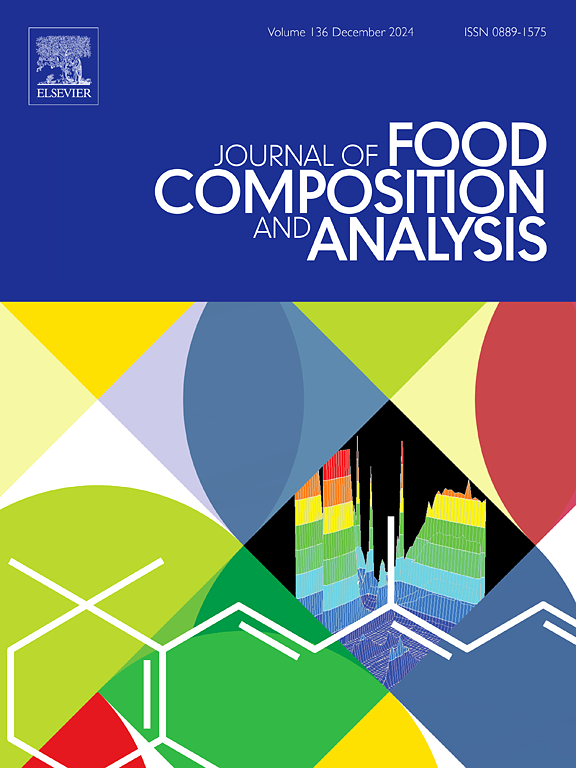Trace detection of acetamiprid carbendazim and melamine in food using a paper-based TiO₂@AgNPs SERS substrate
IF 4
2区 农林科学
Q2 CHEMISTRY, APPLIED
引用次数: 0
Abstract
Ensuring food safety remains critical due to the widespread use of pesticides and illicit additives in food production. This study presents a novel paper-based Surface-Enhanced Raman Spectroscopy (SERS) substrate, synthesized using peroxide-modified titania (TiO₂) combined with silver nanoparticles (AgNPs), for the detection of harmful substances in food. The TiO₂@AgNPs substrate exploits π-π stacking interactions and the localized surface plasmon resonance effect to enhance Raman signals, enabling highly sensitive trace detection. This platform successfully quantified acetamiprid (ACE) in green tea, carbendazim (CBZ) in apple juice, and melamine in milk, achieving limit of detection (LOD) of 8.63 × 10⁻⁵, 2.55 × 10⁻⁵, and 6.76 × 10⁻⁵ μg/mL, respectively. The recovery for all substances ranged from 82.37 % to 97.66 %, with relative standard deviations (RSDs) below 6.64 %, and the analysis and validation results demonstrate that this method exhibits good stability. confirming the method's precision and reliability. Compared to conventional approaches, this substrate demonstrates superior sensitivity, reproducibility, and cost-effectiveness, making it a promising tool for rapid and on-site detection of food contaminants, thereby advancing food safety standards.
求助全文
约1分钟内获得全文
求助全文
来源期刊

Journal of Food Composition and Analysis
工程技术-食品科技
CiteScore
6.20
自引率
11.60%
发文量
601
审稿时长
53 days
期刊介绍:
The Journal of Food Composition and Analysis publishes manuscripts on scientific aspects of data on the chemical composition of human foods, with particular emphasis on actual data on composition of foods; analytical methods; studies on the manipulation, storage, distribution and use of food composition data; and studies on the statistics, use and distribution of such data and data systems. The Journal''s basis is nutrient composition, with increasing emphasis on bioactive non-nutrient and anti-nutrient components. Papers must provide sufficient description of the food samples, analytical methods, quality control procedures and statistical treatments of the data to permit the end users of the food composition data to evaluate the appropriateness of such data in their projects.
The Journal does not publish papers on: microbiological compounds; sensory quality; aromatics/volatiles in food and wine; essential oils; organoleptic characteristics of food; physical properties; or clinical papers and pharmacology-related papers.
 求助内容:
求助内容: 应助结果提醒方式:
应助结果提醒方式:


